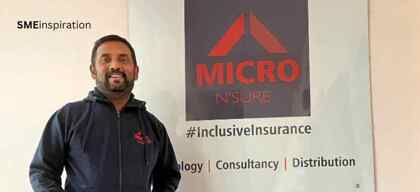Switching up your team? Nine must-do’s for executive hiring success

Employment & HR
160 week ago — 6 min read
Let’s say the CEO of a company operating in a high-growth sector is upgrading their c-suite talent to capture emerging opportunities, including hiring a chief growth officer, chief financial officer, and chief operating officer. Their goal is to restructure and repopulate the leadership team to position the company to realise its fair share (or more) of new business.
There is no guarantee, even for CEOs living this scenario (which, by the way, is current and real), that seemingly fantastic talent—based on disciplined interviewing and background checking—will thrive and achieve ambitious targets.
Executives are on the move. In a recent Forbes interview, ExecuNet founder Dave Opton said, “The pandemic has provided senior-level professionals an opportunity to evaluate their long-term career goals and priorities…Many executives seem to be open to moving jobs and locations, even exploring different career paths, if it means finding work that is fulfilling to them. They are reimagining what their work lives could be.”
Executive search firm Heidrick & Struggles also reports that executive turnover, including at the CEO level, is on the rise versus historic trends.
With this reality across the economy, how can CEOs take the risk out of hiring of new executives?
Whether you are a CEO, a board member, or a colleague of that new senior-level hire—or making the switch to a new company as a candidate—here are nine must-ask questions and must-do actions to ensure that the hard work of rethinking strategic direction, then sourcing, assessing, recruiting, and hiring pays off for everyone:
1. Why does the candidate want to make a switch now and join your company? Why at this point in their career? How are they thinking about the rest of their career? What do they hope to gain from being part of this team? What is their ambition? Be clear on their motivation.
2. What are their expectations of the role, e.g., strategic and decision-making authority, team size, support structure, budget and investments, and state of technology, capabilities, and other dependencies to deliver results?
3. Are performance expectations clear, down to the level of targets for key metrics? Can you articulate what success will look like in the current fiscal year and beyond?
4. How is culture fit assessed? What are the values, beliefs, and behaviors that define how work gets done, and what evidence is there in a candidate’s past suggesting that their values, beliefs, and behaviors are in alignment with those of the organization?
5. For candidates coming either from another sector or from companies at very different stages of development, what evidence exists in a candidate’s past indicating a strong learning curve, adaptability, intellectual curiosity, a desire to learn, an ability to collaborate with and learn from others, and an ability to ask questions and seek help without fear? Such qualities will make a transition easier and allow the hiring organization to benefit from outside perspectives.
6. Who can the candidate look to for mentorship? Who can they look to for support and partnership as they learn the new organization, culture, and business?
7. What is the compensation strategy to align financial rewards, including the level and mix of base, bonus, and commission, to recognize and motivate achieving revenue, profit, risk management, and other critical goals? Are financial rewards aligned with establishing a growth path beyond the current fiscal year?
8. Each new executive hire must be assessed for how they add to the team that must lead the change. Are other team members supportive of the hire? How will you lay out, in onboarding, the expectations to become a high-performing team? What is the path to good governance that will guide how these individuals begin to operate in unison?
9. How can these changes be leveraged as a catalyzing moment to build understanding and buy-in from the entire organization to get behind the executive team, seeing and believing in the drive toward ambitious goals? Is the change management plan, including communications, deliberately designed to enable the intended leap forward?
As we move beyond the past two years, the future only seems to hold continued change at a faster pace with unforeseen risks and opportunities. These are the constants upon which we can rely. In this environment, CEOs of growth businesses, along with the rest of the c-suite and their boards, must make every executive role and appointment matter, and ensure that the executive team comes together as a high-performing leadership and governing body. They will set the pace for the entire organisation to flourish…or fail.
For more business insights, do visit my blog and have a look at my book.
Also read: People managers, this is what your early & new-career employees need to succeed
Image source: Canva
Disclaimer: The views and opinions expressed in this article are those of the author and do not necessarily reflect the views, official policy or position of GlobalLinker.
SME Inspirations
Other articles written by Amy Radin
11 Resolutions for Women Entrepreneurs
70 week ago
8 Tactics to Make Questioning a Superpower
77 week ago
Most read this week
Trending
What is BRC in Export Business?
Export Sector 2 week ago















Comments
Share this content
Please login or Register to join the discussion